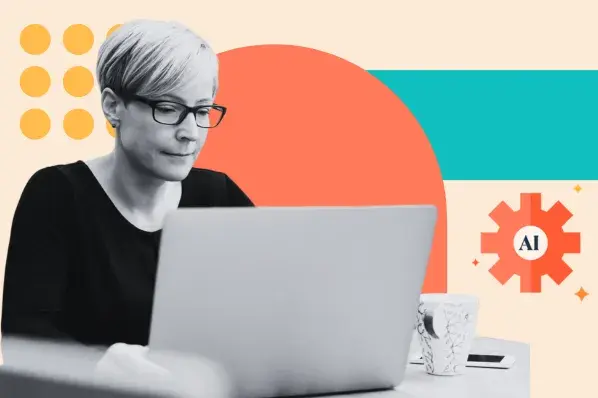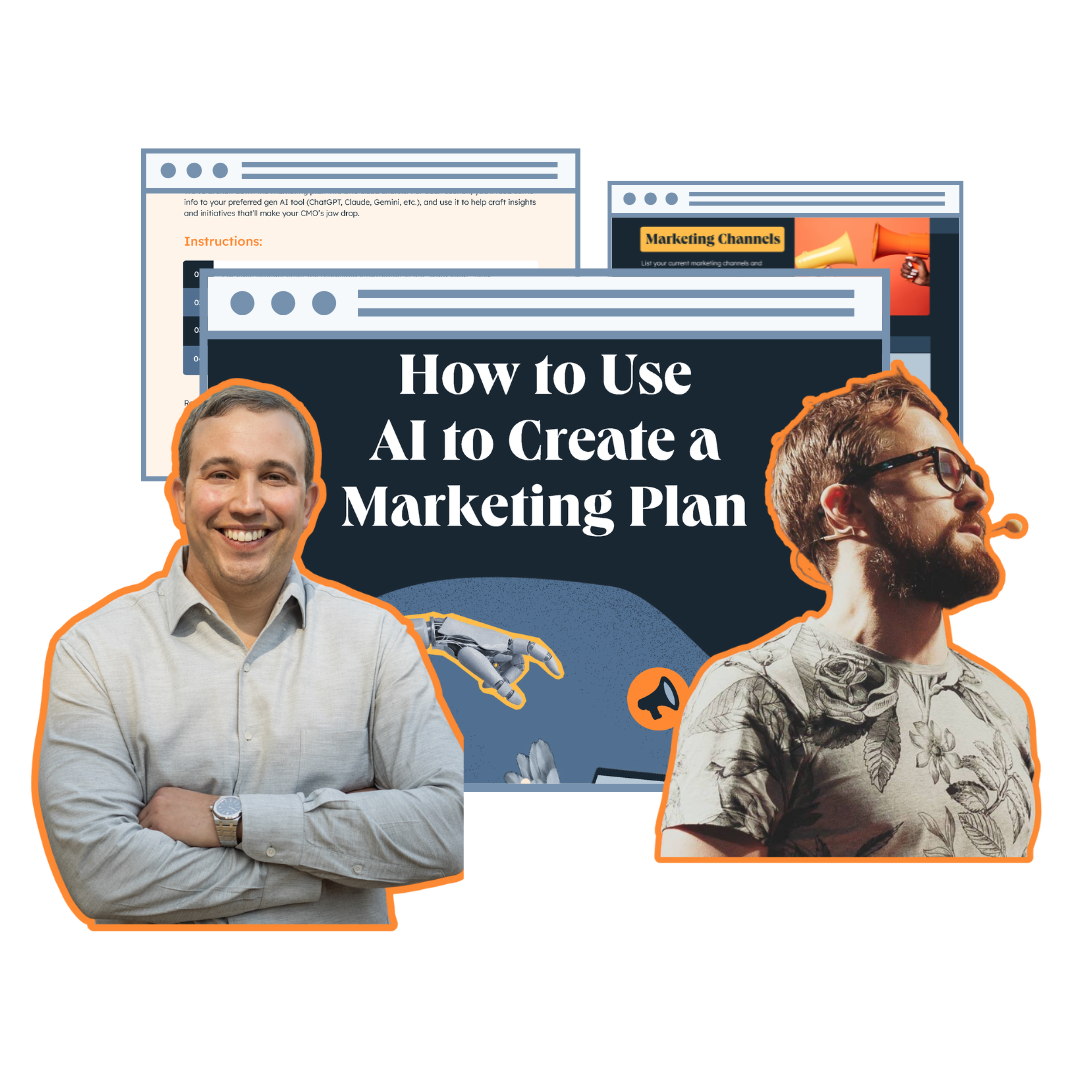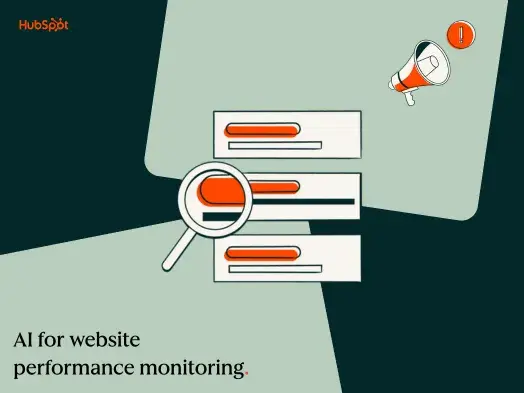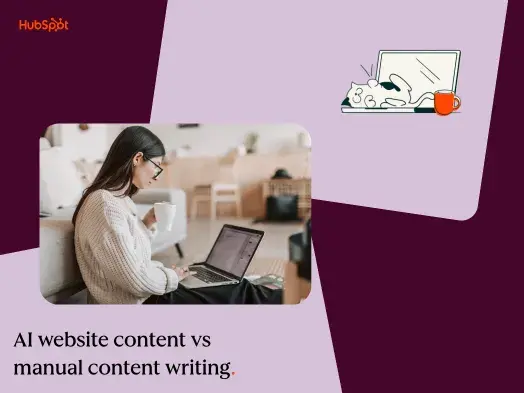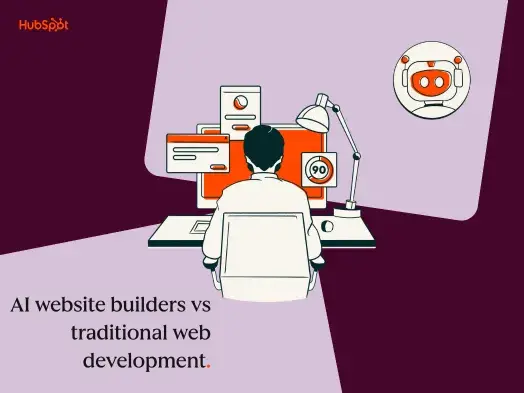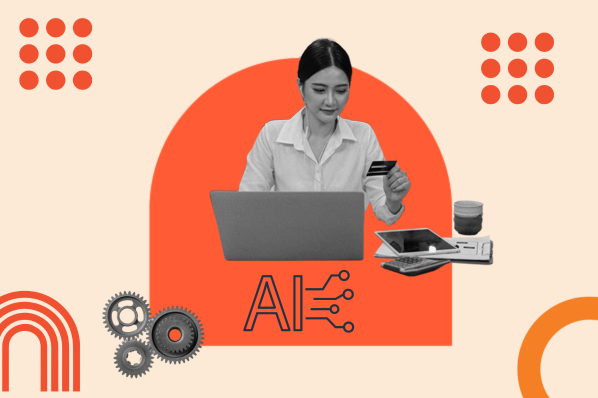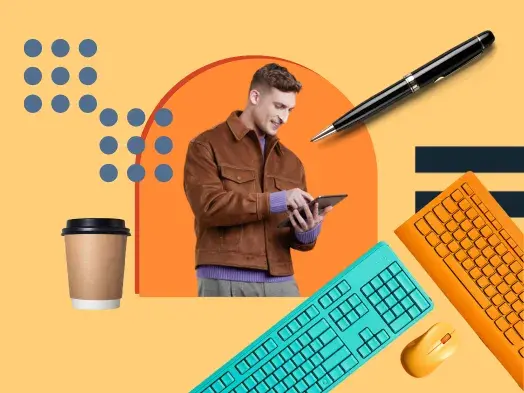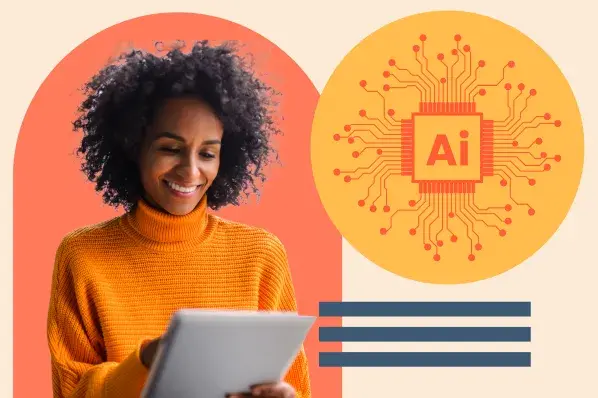Let’s take a closer look at how AI-powered image optimization is changing the game for editors. We’ll cover definitions and advantages — plus a selection of the best AI image optimization tools on the market.
Table of Contents
- What Is AI Image Optimization?
- Advantages of AI-Powered Image Optimization
- AI Optimization Tools for Images and Photos
- How to Pick the Right AI Optimization Tool
- Does AI Image Optimization Actually Work?
What Is AI Image Optimization?
AI image optimization is the process of using artificial intelligence to improve the quality of images without tampering with the content of the picture.
AI image optimization isn’t about AI-generated photos — it’s about balancing and optimizing things like:
- File size
- Image quality
- Loading times
AI image optimization tools cut down on the time it takes to compress, adjust, or otherwise enhance your already existing images. When your images are smaller and higher quality, your website as a whole is more optimized — which helps SERP performance.
P.S. If you’re wondering how you can improve the optimization of your website, check out this handy checklist.
Advantages of AI-Powered Image Optimization
For Instagram-editors like me, the impacts of AI-powered image optimization aren’t substantial. But if I put myself in the shoes of professional photographers, website managers, and graphic designers, it doesn’t take long to realize that AI image optimization can have a huge impact on productivity.
And the benefits don’t stop there — AI image optimization improves the user experience for viewers, too. Here are the advantages of using AI to optimize your images.
Speed
For teams working with photos on a regular basis, AI image optimization is a massive time saver. When done manually, the steps to optimize your images — like resizing, adjusting, and compression — can take around an hour. Using an AI optimizer cuts that process down to just minutes.
Loading Times
When editors can leverage tools like image optimizers, they can very easily compress images. In the past, time-crunched teams may have been inclined to skip this step, but with AI optimizers, they can compress images in seconds. The key advantage of image compression is driving loading times down, which improves user experience and technical SEO performance.
Increased Mobile Responsiveness
Similar to image compression, editors, photographers, and graphic designers have always had the option to resize images to fit mobile. Those willing to proceed with care took the time to do that, but many are in too much of a hurry to adjust image sizes that carefully. AI image optimizers make it easy and fast to resize images to fit beautifully on mobile screens.
Scalability
For businesses that crank out dozens of blogs per day, or websites looking at significant growth coming down the pipeline, the scalability of AI image optimization is a major benefit. Rather than bringing on additional editors when the task list grows longer, AI image optimization stays quick whether you’re uploading 1 or 1,000 photos. The scalability of AI tools is unmatched when compared to manual optimization.
Of course, if you intend to scale, you’ll need to plan ahead. Some tools are better equipped than others to handle significant numbers of photographs. NCube published an article on scalability in AI software and recommends making sure you’ve selected a scalable model from the jump.
AI Optimization Tools for Images and Photos
Now that you know the benefits of AI image optimization, let’s take a look at some of the specific tools that can bring that vision to life.
1. Kraken.io
Kraken.io is a leading AI tool built with an emphasis on reliability. Some heavy-hitting companies use Kraken, like Microsoft, Dell, GoDaddy, and Tesla — which tells me they are leading the pack when it comes to image optimization.
Core features:
- Image resizing
- ZIP uploader
- Web interface PRO
- Cloud storage
- Customer support
- Lossless image compression
- Wordpress & Magento plugins
- Statistics on optimization and compression
Pricing:
- Micro: $5/mo (500 MB of images per month)
- Basic: $9/mo (2 GB of images per month)
- Advanced: $19/mo (5 GB of images per month)
- Premium: $39/mo (15 GB of images per month)
- Enterprise: $79/mo (60 GB of images per month)
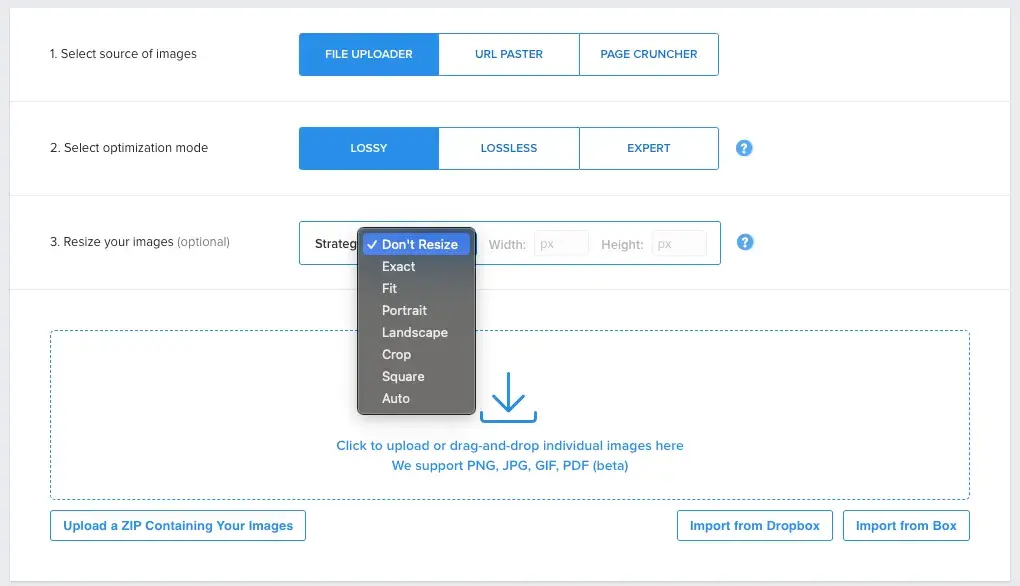
What I liked: I found Kraken to be super easy to use. I’m no photo expert, but when I opened my free account, Kraken offered me a tour of the tool. I chose to explore on my own and very quickly made it to the editor I intended to use. Uploading was easy and I could optimize and resize my images quickly and simply.
2. Cloudinary
Cloudinary is an image and video API platform that tackles the optimization of all types of visual media. It’s a feature-rich solution with approachable pricing options and extreme customizability.
Core features:
- Widget, API, and search uploads
- Remote fetch, auto-backup, and revision tracking
- Image and video transformations
- Video transcoding and adaptive streaming
- Support
- High-performance delivery through a CDN
- Auto-tagging based search
- Allowlist/Blocklist asset access
- Video bandwidth boost
Pricing:
- Free: $0/mo (3 users & 25 monthly credits + base features)
- Plus: $89/mo (3 users & 225 monthly credits + additional features)
- Advanced: $224/mo (5 users & 600 monthly credits + advanced features)
- Enterprise: Customized plans for scaling digital media with improved features, security, and support.
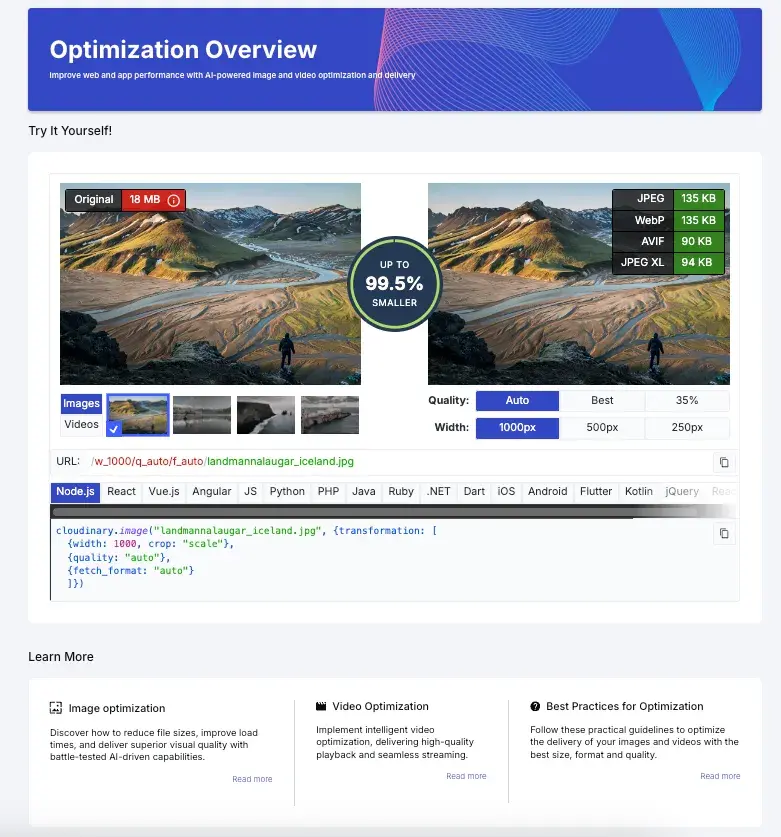
What I liked: When I opened the Cloudinary page, I was immediately met with some code — which intimidated me at first. But the tool did a great job of walking me through how to use it. Cloudinary feels more technical than other options, but it’s extremely feature-rich. The Transformation Center offered a full suite of image transformation tools, and the Optimization window walked me through optimizing both images and videos.
Pro Tip: I talked to Kevin Lynch, the Director of Content at Cloudinary, to hear if he had any special tips on using Cloudinary. Here’s what he said:
“One of the lesser-known use cases is that Cloudinary is a great tool for the entire marketing team. For creatives, central asset management (DAM) eliminates the headaches of manual design tweaks and approval bottlenecks.
For devs, AI-powered optimizations automatically resize and format every image or frame for different devices, making media workflows go smoothly for faster, on-brand, more collaborative campaign launches.”
3. Topaz Labs
Topaz Labs is a robust photo and video editing suite, offering a range of AI-powered tools that can bring your visual assets to a new level. This suite of tools is often compared to tools like Adobe Photoshop — and for good reason. With a breadth of features and a focus on high quality, Topaz Labs is a great option for businesses looking to elevate their imagery at scale.
Topaz Labs has a full suite of tools, but the image optimization tools sit in both Gigapixel 8 and Photo AI 3.
Core features:
Gigapixel 8
- The ability to upscale your images to 1 billion pixels
- Extremely quick image upscaling
- 10+ AI models that “intelligently upscale” images with exceptional detail
- Batch processing
- CMYK, RAW, CLI, and plugin support
Photo AI 3
- Face recovery
- Photo sharpening & upscaling
- Low light editing
- AI image balancing
- Object removal
Pricing:
- Video AI 5 Personal: $1099/year
- Video AI 5 Pro: $4999/year (teams of 5+)
- Photo AI 3: $199/year with $99 auto-renewal
- Gigapixel 8 Personal: $199/year with $99 auto-renewal.
- Gigapixel 8 Pro: $499/year
- Gigapixel 8 Pro Teams: $1999/year (teams of 5+)
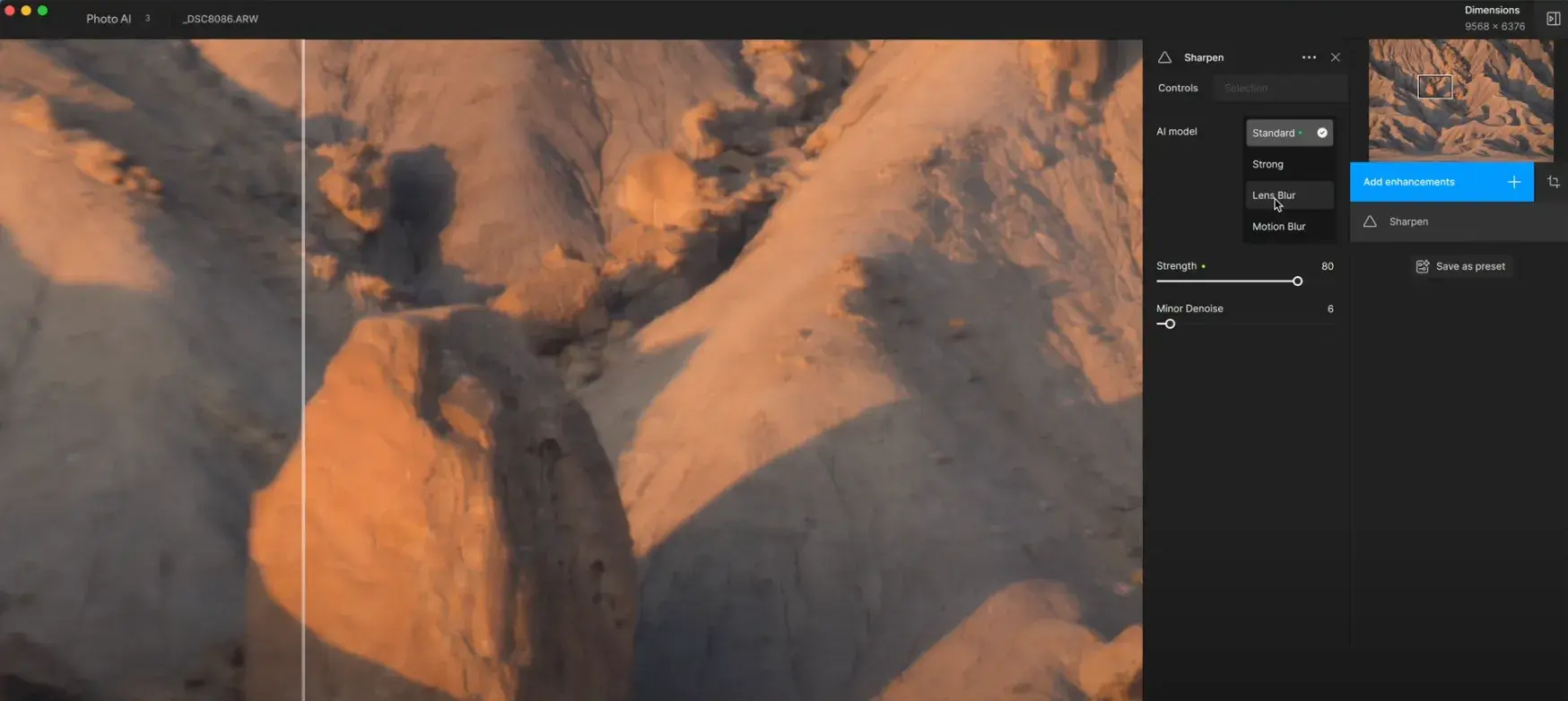
What I liked: My favorite thing about Topaz Labs is its versatility. The AI tools on both photo and video are extremely comprehensive. I felt like I could accomplish anything I’d need to get done on a photo within Topaz, which means it could certainly simplify my tech stack.
4. Optimole
Optimole is a focused, helpful, and affordable image optimizer — great for SMBs who are looking for budget-conscious ways to improve their processes.
Core features:
- Image resizing
- Blur, sharpen, and pixelate filters
- Automatic optimization
- AI-powered smart crop tool
- Quick processing speeds
- Lossless & lossy optimization
- Custom WordPress plugin
Pricing:
- Starter: $22.99/mo (40k visits monthly & no CNAME support)
- Business: $47.00 (100k visits monthly & CNAME support)
- Custom: Contact (10 million+ visits monthly + CNAME support + dedicated account manager)

What I liked: Optimole is extremely easy to use. I’m not a photographer, and I’m relatively uncomfortable with editing tools, but I could very easily upload and adjust images within Optimole. I think this option is perfect for small organizations with focused needs.
5. TinyPNG (Tinify)
TinyPNG is a tool focused on image compression so your website loads quickly. Its focused use case makes it a great option for organizations looking to solve a specific problem without breaking the bank.
Core features:
- Image compression for WEBP, JPEG, and PNG files
- Image conversion
- API integration
- Image CDN
- WordPress plugin
- Website image analyzer
Pricing:
- Web pro: $39/year/user (unlimited image compression)
- Web Ultra: $149/year/user (unlimited image compression and conversion)

What I liked: TinyPNG is inexpensive and easy to use. In fact, you can compress your images directly on the homepage of the site — so if you just have a few pictures, you don’t even need to make an account. Once I logged into my account, the process continued to be extremely intuitive. This is a great option for non-technical small businesses.
How to Pick the Right AI Optimization Tool
If you’re considering taking advantage of an AI image optimization tool, I’d recommend taking into account three major variables before you make your investment: price, size, and features.
Price
The easiest way to determine the right tool for you is by looking at price. The tools listed above, and the many more on the market, vary considerably based on price. If you’ve got a small (or nearly non-existent) budget for image optimization, there are plenty of options available for you. And if you’re willing to spend more to gain more features, you can opt for a premium tool.
Image Size & Quantity
Before you invest in a robust tool or payment plan, it’s worth assessing the size and quantity of images you have. You don't need a robust upscaling tool if you’re just managing a simple website. But if you’re projecting images onto the walls of Times Square or processing thousands of images per day, you’ll want a tool that can sustain that scale.
Features
Finally, you need to decide how many features you actually need. Are you really going to use all the capabilities of a more expensive option? Are you looking for particular integrations or applications? Feature richness and budget go hand in hand, so take stock of what you’re really going to take advantage of.
Does AI Image Optimization Actually Work?
Without a doubt, AI image optimization is changing how editors get their work done. A great image optimizer can complete hours of work in only minutes, which is revolutionary for teams trying to get a lot of work done in a short amount of time.
Each tool on this list has its own strengths and weaknesses. Some are feature-rich but expensive, while others are focused but extremely affordable. My favorite tool was Cloudinary, which I feel is the best of both worlds. The features are extensive, but the tool (especially the basic plan) isn’t too pricey.
My personal pro tip? If you’re not sure where to begin with your image optimization tools, start small. Invest in a cheap and easy tool before you take on a premium tool with a steep learning curve.
Artificial Intelligence

